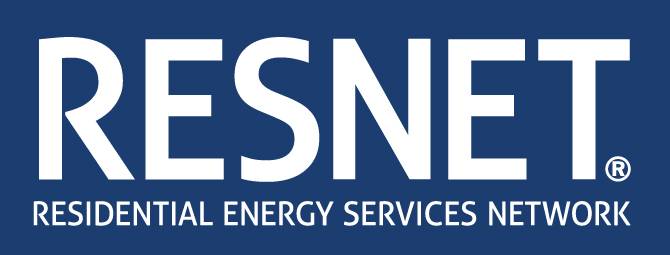Green Building and Sustainable Housing Trends in 2022
RESNET works to advocate for energy efficient homes and lead the path to net zero energy homes
By Valerie Briggs
2022 has been a busy year for green building and sustainable housing trends such as water efficiency, decarbonization, Environmental, Social and Governance (ESG) reporting, affordable high-performance housing and better financing for energy efficient homes.
With the wildfires and increasing droughts we saw this year, home water efficiency is becoming more important to consumers and water districts. Even in areas that are not experiencing potential water shortages, homeowners are facing soaring water and sewer bills, putting an even tighter squeeze in this time of inflation on family budgets. The RESNET® home water efficiency rating system, HERSH2O®, allows HERS® Raters to contribute to addressing the water challenges in their communities. The program also projects another matrix for consumers considering the sustainability of homes.
In July 2022, large production builder KB Home committed to all homes built in new communities in drought-stricken Nevada, Arizona and California to be rated with RESNET’s HERSH2O® whole-house water efficiency rating and achieve the U.S. Environmental Protection Agency’s WaterSense label for homes.
In the U.S. it is estimated some 35 percent of greenhouse gas emissions result from burning fossil fuels to power, heat and cool buildings. Utility residential energy programs are shifting to time of use and carbon savings, as instances when energy is used is becoming more important than how much is saved. RESNET is working to address this issue with the RESNET Carbon Index®, based upon its ANSI standard developed in cooperation with the Natural Resources Defense Council (NRDC), the Consortium for Energy Efficiency (CEE), the California Energy Commission (CEC) and the National Renewable Energy Laboratory (NREL). It uses hourly CO2e emission rates and electricity generation emission projections, as published by the NREL, and combines these values with the hourly energy consumption given by the calculation of the HERS Index.
Among the various uses of the RESNET Carbon Index, such as utility incentives and consumer awareness, lies another potential—use in builders’ ESG reporting. ESG reporting is now playing a more prominent role in how companies around the globe operate and how investors invest. Builders and mortgage finance companies are using HERS Index Scores as credit for ESG. The importance of HERS Ratings to publicly traded builders has been increasing as investors look to more ESG factors in their investment decisions.
The last two trends involve the question of how people can afford these high-performance homes. Affordable housing is a combination of affordable construction and operating costs, both being achieved by energy efficient construction. We recently featured the “Kinda Tiny Habitat House” on our RESTalk podcast. It was constructed in Athens, Ga. by the Athens Area Habitat for Humanity, based on a design contest cosponsored by RESNET accredited rating provider SK Collaborative and the Atlanta Branch of the USGBC. The two homes built were rated this year, one with a HERS Index Score of 8 and the other with a HERS Index Score of 0. These types of homes can provide affordable living, use fewer resources and have a smaller environmental footprint, according to the USGBC.
Lastly is the trend of green mortgages. The two major purchasers of mortgages on the secondary market, Freddie Mac and Fannie Mae, have each issued green bonds for energy-efficient homes. The Freddie Mac program began in January 2022 and offers incentives for lenders on new single-family homes that achieve a HERS Index score of 60 or less. Fannie Mae’s Green Mortgage-Backed Securities (MBS) program for new single-family homes is based on the ENERGY STAR Certification, verified by RESNET accredited rating provider PEG and launched in 2020. In July, the program Single-Family Green MBS program announced it eclipsed $1 billion in issuance in just two years.
In addition to these existing programs, the recent passage of the Inflation Reduction Act this summer included provisions to extend the 45L tax credit for 10 years. The tax credits include $2,500 per home meeting the eligibility standards of the EPA’s ENERGY STAR Single Family New Homes Program and $5,000 tax credit for homes certified to meet the DOE’s Zero Energy Ready Home program.
As 2022 comes to a close, RESNET is pleased to have played a part in these green building and sustainable housing trends. We will continue to work and advocate for energy efficient homes and lead the path to net zero energy homes and are excited for what the future may hold.
Valerie Briggs is the Communications Director for RESNET.

